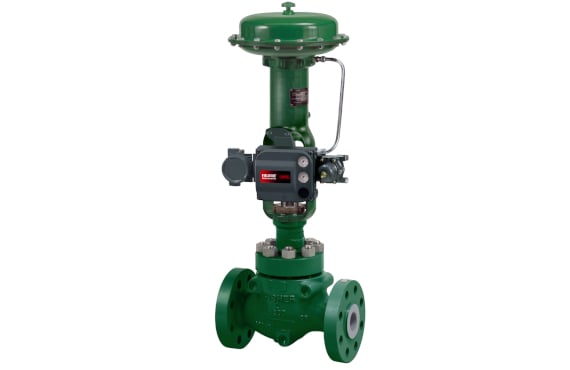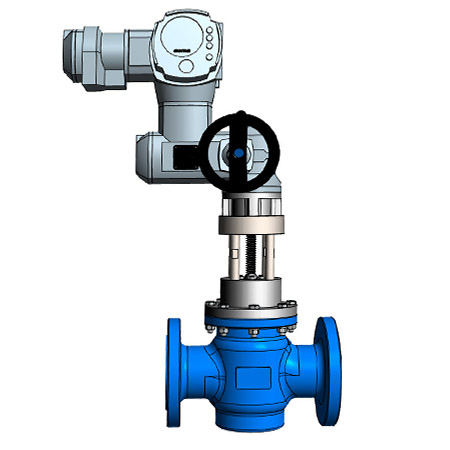Effective Control Valves: Trick Elements for Reliable System Monitoring
Effective Control Valves: Trick Elements for Reliable System Monitoring
Blog Article

Maximize Power Financial Savings and Comfort With Advanced Structure Automation Controls
In the realm of modern design and center management, the combination of advanced structure automation controls stands as a pivotal advancement. The convergence of modern technology and sustainability has birthed a new age where energy efficiency, convenience optimization, and operational streamlining are no longer remote ambitions yet obtainable realities. By utilizing the power of automation, structures can adjust, respond, and develop in methods that were once unbelievable. The capacity for substantial power financial savings and boosted comfort is not simply a possibility however a pledge waiting to be fulfilled. This paradigm change in building administration holds the vital to opening a world where environmental conscientiousness and occupant wellness sympathetically coexist within the wall surfaces of our frameworks.
Power Efficiency Advantages
Power effectiveness advantages can dramatically minimize energy intake and operational prices in buildings. Energy-efficient systems, such as advanced building automation controls, can enhance the use of sources like heating, lights, and air conditioning, leading to reduced power costs over time.
Additionally, enhanced energy performance can prolong the lifespan of structure equipment and systems. By running a lot more efficiently, HVAC systems, lighting fixture, and various other structure parts experience much less deterioration, resulting in reduced upkeep and replacement prices. In addition, energy-efficient structures typically command greater home values and rental prices, offering long-lasting monetary advantages to owners.
Additionally, energy effectiveness can boost occupant convenience and performance. Properly controlled interior settings with optimum lighting and thermal conditions produce an even more favorable and pleasurable workspace, resulting in enhanced employee fulfillment and efficiency. Overall, the energy efficiency benefits associated with sophisticated structure automation controls are multifaceted, incorporating price savings, environmental stewardship, and passenger wellness.
Improved Convenience Control
Enhancing convenience control in building settings requires a sophisticated assimilation of innovative automation systems for optimum occupant wellness. By utilizing sophisticated structure automation controls, centers can customize the interior environment to fulfill the certain needs and choices of passengers. control valves.
By integrating these innovative controls, buildings can not only boost comfort yet likewise enhance power performance by enhancing system operations based on actual occupancy and use patterns. Inevitably, focusing on occupant convenience through advanced automation systems leads to a more satisfying and healthier indoor atmosphere.
Functional Efficiency Improvements

In addition, the implementation of real-time monitoring and analytics tools allows structure drivers to identify energy ineffectiveness and operational anomalies quickly. By constantly monitoring power use patterns and system performance metrics, modifications can be made in real-time to optimize power intake and make certain peak operational performance. control valves. In addition, integrating demand action approaches right into building automation controls can further enhance operational effectiveness by dynamically readjusting energy usage based upon grid problems and prices signals
Indoor Environment Optimization
Efficient indoor environment optimization is a fundamental element of building automation controls, making sure passengers' comfort and well-being while making best use of power cost savings. By utilizing advanced sensors and controls, constructing automation systems can constantly keep track of and readjust temperature, moisture degrees, air quality, and ventilation to develop an optimal interior setting. Maintaining constant and comfy problems not only enhances resident contentment but additionally increases Clicking Here efficiency and general well-being.
Indoor environment optimization also plays a critical function in energy efficiency. By fine-tuning heating, ventilation, and air conditioning systems based on real-time data and tenancy patterns, building automation controls can substantially minimize energy usage - control valves. Executing strategies such as demand-controlled ventilation and thermal zoning can assist minimize energy waste while guaranteeing that each area of the building receives the essential conditioning.

Sustainable Atmosphere Creation
Structure automation regulates not only maximize interior climate problems for power performance and passenger comfort yet also lay the structure for producing a sustainable environment through strategic management of systems and resources. By integrating sophisticated structure automation innovations, such as sensors, actuators, and intelligent software application, centers can readjust and check power usage in real-time go now to reduce waste and decrease their carbon footprint. These systems enable predictive upkeep, identifying prospective issues prior to they escalate and optimizing equipment performance to improve long life and efficiency.
In addition, sustainable setting production extends beyond power monitoring to include water preservation, waste decrease, and interior air quality enhancement. Structure automation controls can manage water usage, discover leaks, and make sure appropriate garbage disposal methods, adding to overall sustainability initiatives. Furthermore, by managing and monitoring ventilation and filtration systems, these technologies boost passenger health and wellness and productivity while reducing energy intake connected with a/c procedures.
Verdict
Finally, advanced building automation manages deal significant advantages in regards to energy financial savings, convenience control, functional performance, indoor environment optimization, and developing a sustainable environment. By executing these controls, buildings can attain optimum efficiency while decreasing energy usage and improving occupant comfort. It appears that the use of sophisticated automation modern technology is vital in improving structure performance and creating a more sustainable future.
Energy efficiency benefits can substantially decrease power consumption and functional costs in structures. Overall, the power performance use this link advantages connected with sophisticated structure automation controls are multifaceted, incorporating cost financial savings, ecological stewardship, and owner health.
Furthermore, including need action approaches right into building automation controls can better enhance functional efficiency by dynamically readjusting energy use based on grid conditions and rates signals.
Structure automation controls not just maximize interior environment conditions for power efficiency and occupant convenience however also lay the foundation for producing a sustainable atmosphere via strategic management of resources and systems.In conclusion, progressed building automation regulates deal considerable benefits in terms of power financial savings, comfort control, operational efficiency, interior climate optimization, and creating a lasting setting.
Report this page